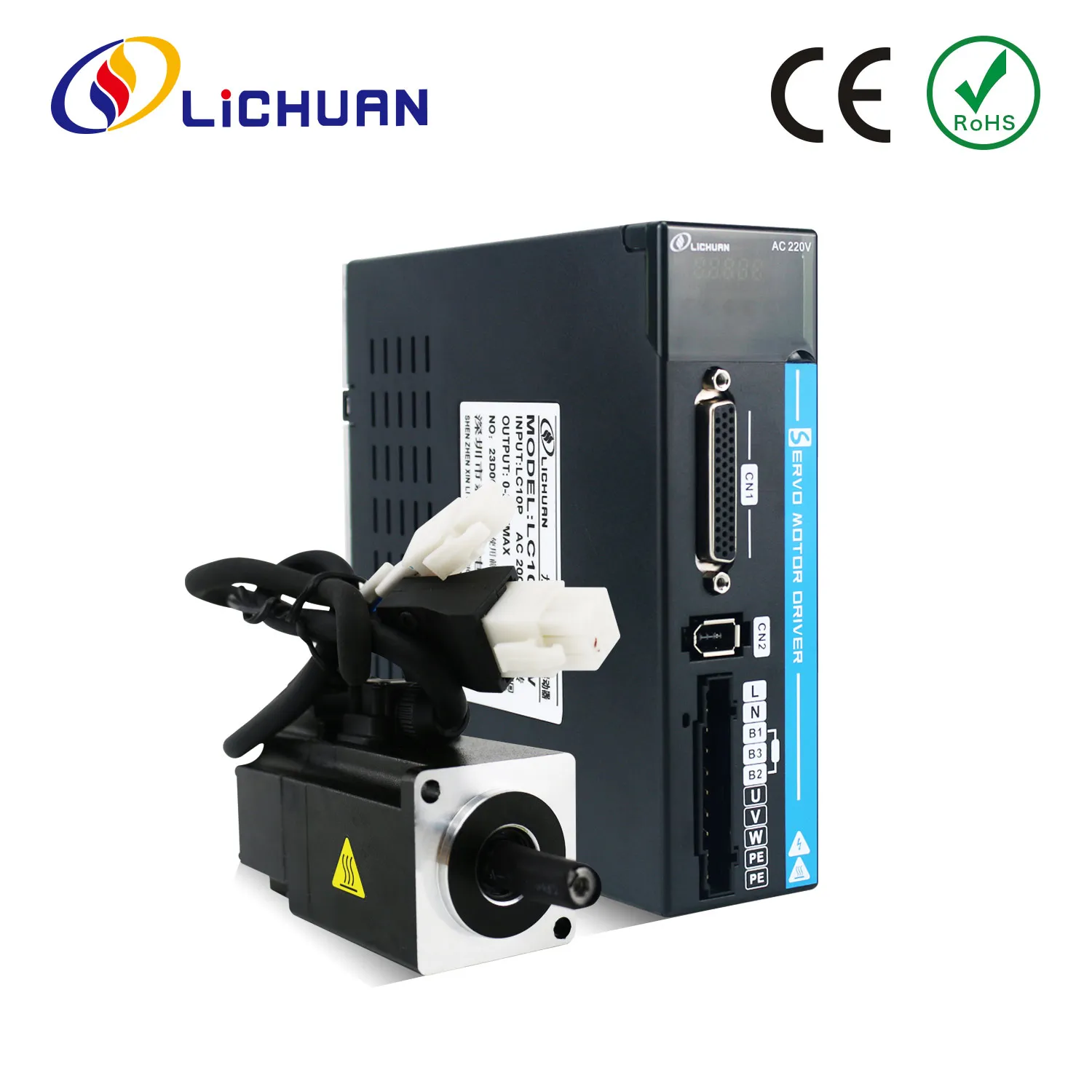How do you control an AC servo motor?
2024-11-21
Controlling an AC servo motor involves managing its position, speed, and torque through precise feedback and control systems. Here’s a comprehensive guide to understanding how to control an AC servo motor:
1. Components Required for Control
- Servo Motor: The AC servo motor being controlled.
- Servo Drive/Controller: An electronic device that interprets control signals and supplies the appropriate current and voltage to the motor.
- Feedback System: Typically, an encoder or resolver on the motor provides real-time data about its position, speed, and direction.
- Control Signal: A command from a controller, such as a microcontroller or PLC (programmable logic controller).
- Power Supply: Provides electrical power to the motor and drive.
2. Control Methods
There are three primary control methods for AC servo motors:
a. Position Control
- Use: Ideal for applications requiring precise movement, such as robotics or CNC machines.
- How it Works:
- The controller sends a position command.
- The servo drive calculates the difference between the desired and actual position (error).
- The motor moves until the error is minimized or eliminated.
b. Speed Control
- Use: Suitable for applications like conveyor belts or fans requiring consistent speeds.
- How it Works:
- The desired speed is sent as a command to the drive.
- Feedback from the encoder allows the drive to maintain this speed by adjusting the motor’s voltage and current.
c. Torque Control
- Use: Useful in applications such as winding machines, where maintaining force is crucial.
- How it Works:
- The torque command is sent to the drive.
- The drive controls the motor’s current, as torque in an AC motor is proportional to current.

3. Feedback Mechanism
- Feedback is essential for accurate control.
- Common feedback devices:
- Incremental Encoders: Provide relative position and speed data.
- Absolute Encoders: Provide precise, absolute position information.
- Resolvers: Durable devices offering position and speed feedback, often in harsh environments.
4. Controlling via Servo Drive
The servo drive plays a central role in controlling the motor. Here's the process:
1. Command Input: The drive receives signals (analog, digital, or pulse) from a controller.
2. Feedback Processing: It uses feedback data from the encoder or resolver to determine the current motor status.
3. Error Calculation: Compares the command with the feedback to identify discrepancies.
4. Adjustment: Sends precise electrical signals to the motor to correct speed, position, or torque.
5. Communication Protocols
Modern servo systems often use communication protocols to connect drives to controllers:
- EtherCAT, CANopen, Modbus: Enable synchronized control and easy integration with PLCs or computers.
- PWM or Pulse-Direction Signals: Common in simpler setups.
6. Tuning and Calibration
To achieve optimal performance:
- Use the servo drive’s built-in tuning features or software tools.
- Adjust parameters like proportional, integral, and derivative (PID) gains for smooth and accurate motion.
7. Practical Steps for AC Servo Motor Control
1. Power Up: Connect the motor and drive to a suitable power source.
2. Connect Feedback: Ensure the encoder or resolver is wired to the drive.
3. Set Parameters: Configure the drive for motor specifications (e.g., current, voltage, encoder type).
4. Input Control Signals: Provide position, speed, or torque commands.
5. Monitor and Adjust: Use monitoring tools to check motor performance and adjust settings as needed.
8. Example Application: CNC Machine
In a CNC machine, the controller sends position commands to the servo drive. The drive adjusts the AC servo motor's position by interpreting encoder feedback, ensuring precise tool movement and cutting accuracy.
9. Advantages of AC Servo Motor Control
- High Precision: Excellent for applications requiring detailed control.
- Dynamic Response: Rapidly adjusts speed and torque for changing conditions.
- Energy Efficiency: Only consumes the energy needed for the task.
Conclusion
Controlling an AC servo motor requires a combination of a servo drive, feedback systems, and proper tuning. Understanding the requirements of your application (position, speed, or torque control) will help you configure the system for optimal performance.


